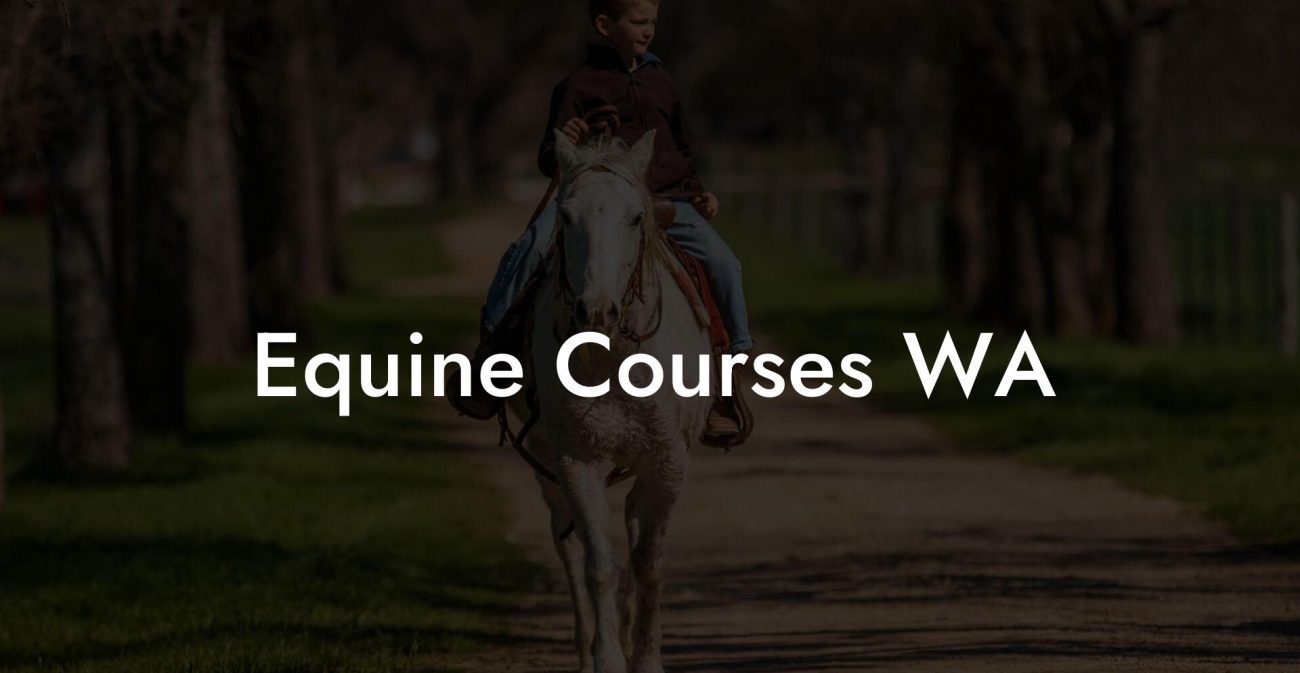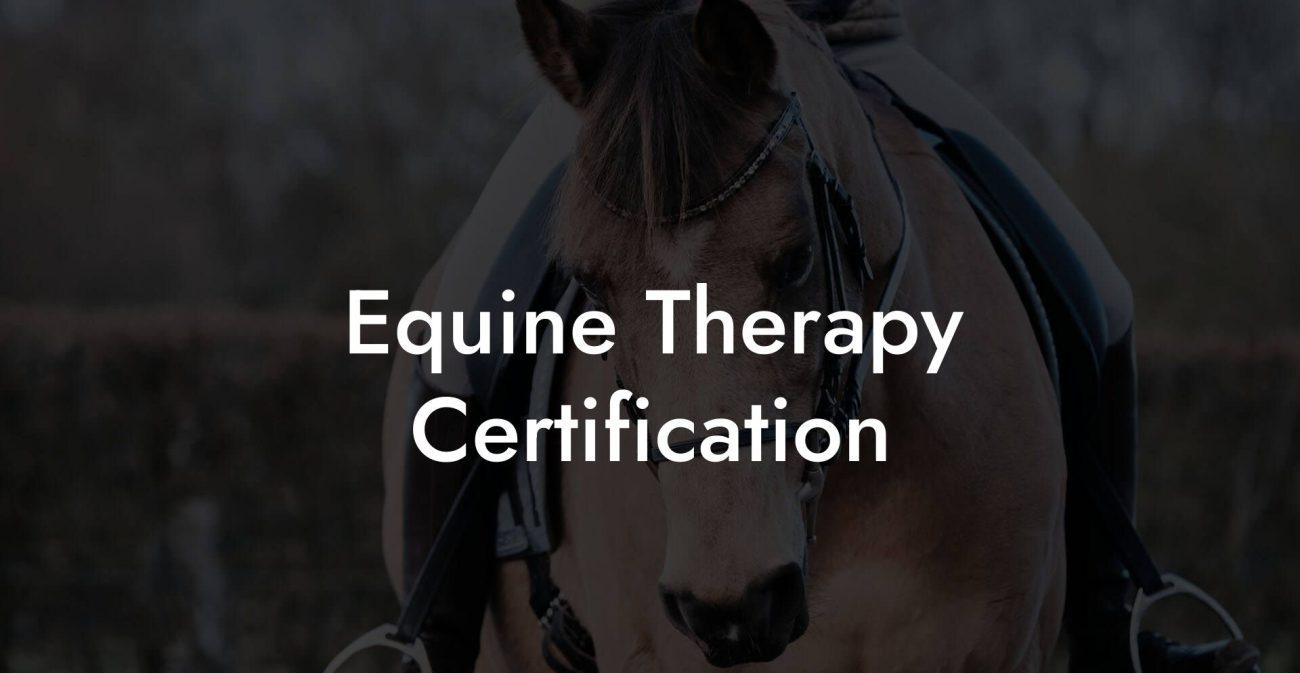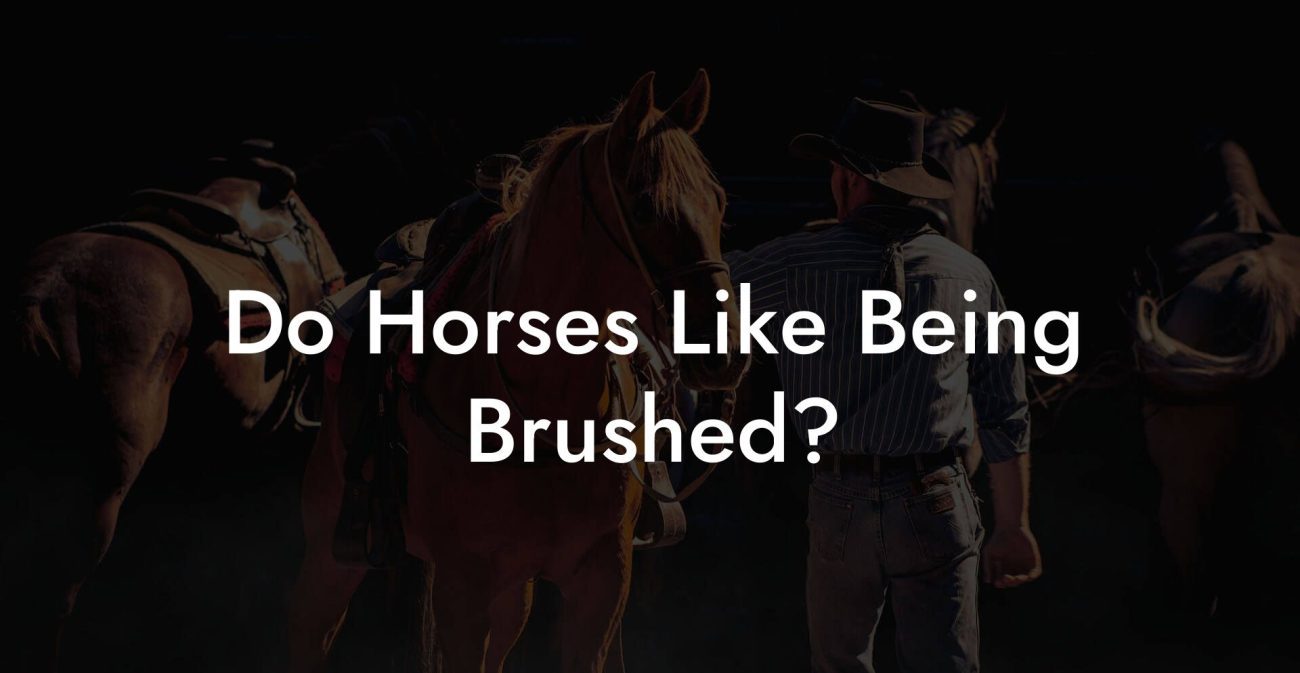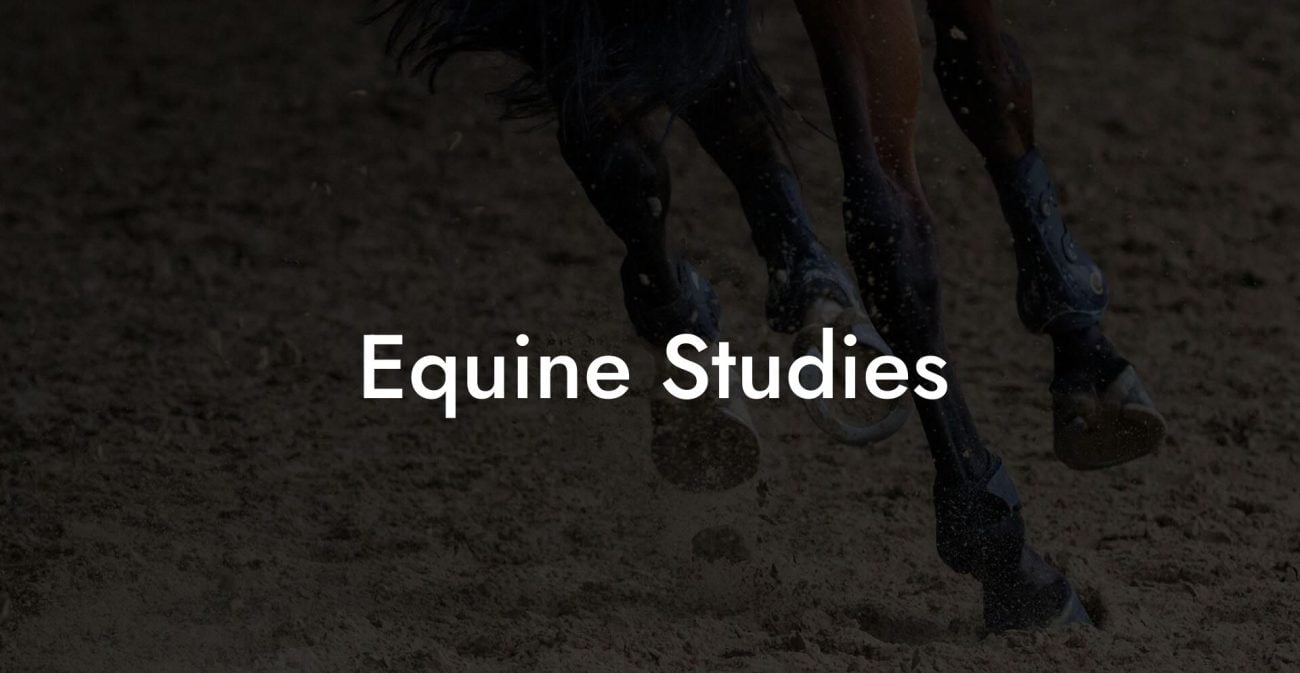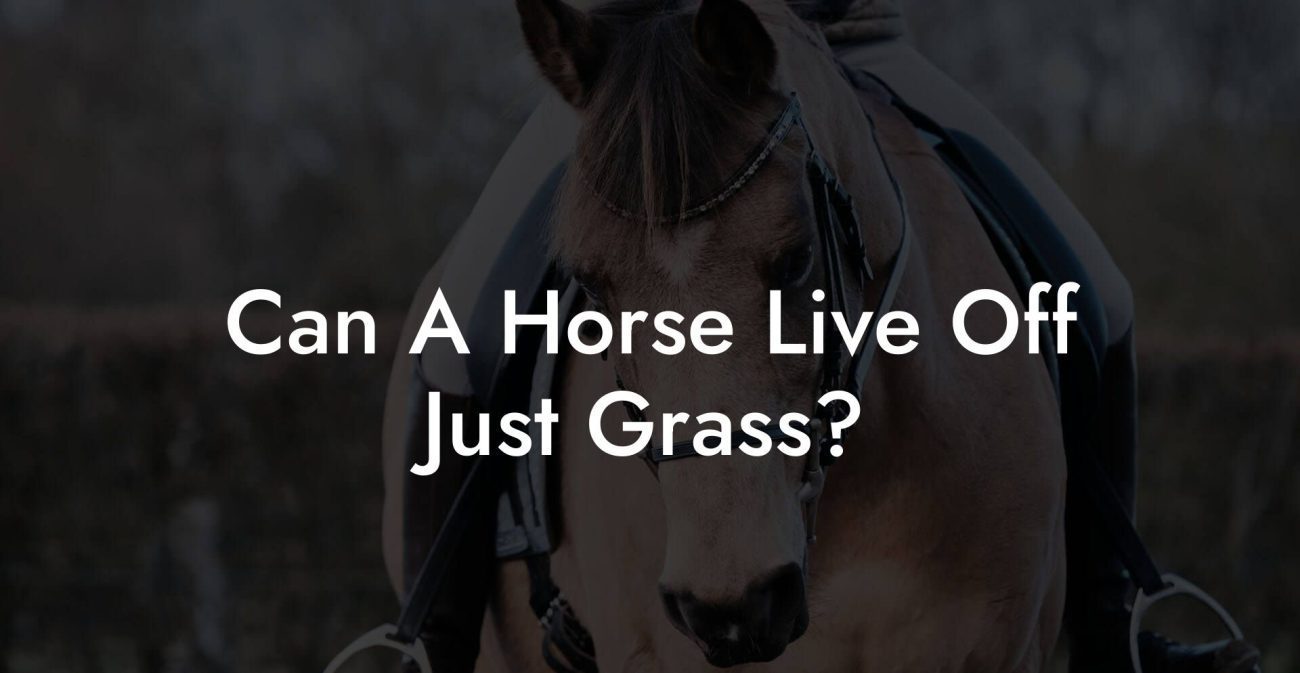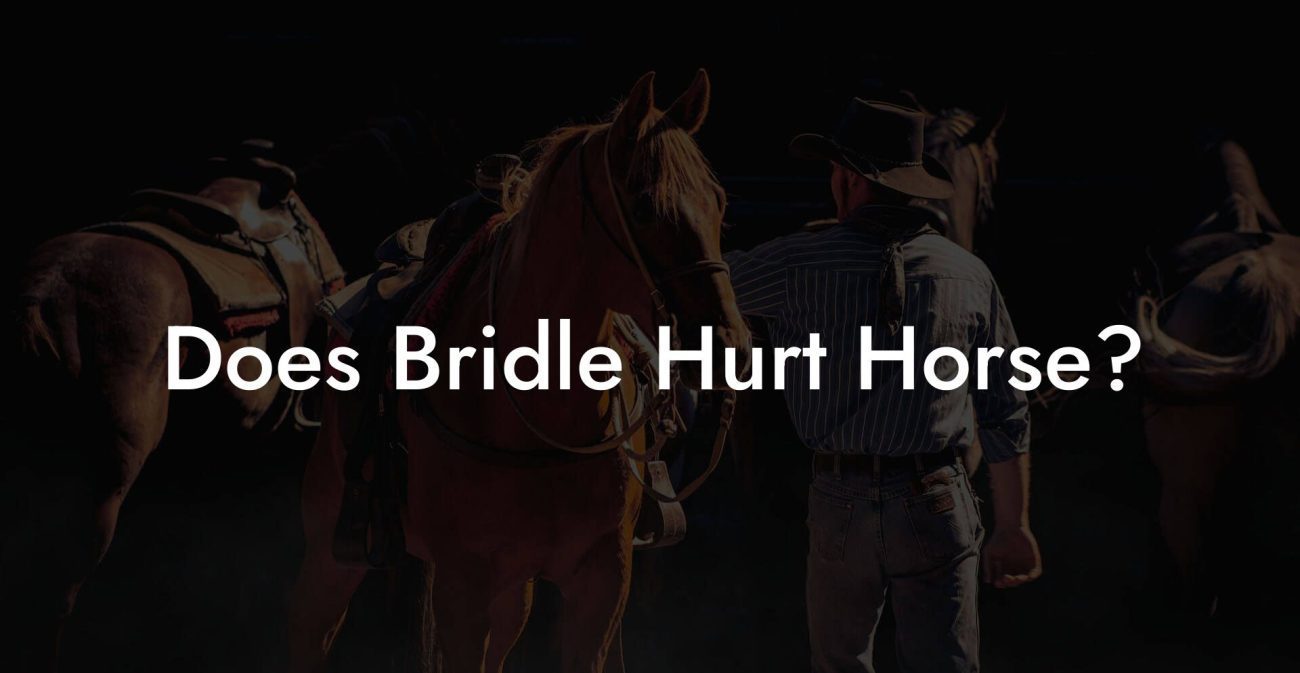When you first hear the phrase “Why Do You Shoot A Horse With A Broken Leg?”, it’s bound to make you do a double-take, equal parts baffled and intrigued. Behind this provocative question lies a world of equine lore, veterinary ethics, and practical horse care that has evolved dramatically over the years. For Gen-Z and millennial horse enthusiasts, caretakers, and even the casually curious, this pillar page is your deep-dive guide into understanding the origins, implications, and modern perspectives on managing severe equine injuries. Get ready to unpack centuries-old idioms, challenge outdated practices, and explore how contemporary equine care principles can empower you to save lives rather than resorting to drastic measures.
Quick Links to Useful Sections
- The History and Origin of a Controversial Question
- Breaking Down Equine Injuries: The Reality of a Broken Leg
- Modern Treatment Options: More Than Just a Grim Decision
- Ethical Considerations in Equine Euthanasia and Care
- The Metaphor Behind the Mayhem: Understanding the Saying
- Modern Equine Rehabilitation: Alternatives to Drastic Measures
- Preventative Measures: How to Keep Your Horse Out of Harm’s Way
- Resources and Community Support: Your Next Steps in Equine Care
- Equine Care Case Studies: Real Stories of Recovery and Resilience
- Case Study 1: From Despair to Hope
- Case Study 2: A Community United in Compassion
- Case Study 3: Rethinking the “Inevitable” in Equine Care
- Building Your Personalized Equine Care Plan
- Step 1: Comprehensive Health Assessment
- Step 2: Define Your Goals
- Step 3: Integrate Multidisciplinary Approaches
- Step 4: Establish a Routine
- Step 5: Monitor, Adapt, and Thrive
- Equine Care FAQs: Your Questions Answered
- Your Journey to Informed and Compassionate Equine Care
The History and Origin of a Controversial Question
At first blush, “shooting a horse with a broken leg” sounds shockingly inhumane. Historically, however, this phrase is steeped in a mix of folklore, practical considerations, and a dark sense of humor. In times past, when veterinary science was in its infancy, a severely broken leg in a large animal like a horse often spelled a grim prognosis. With limited surgical options and high risks of infection, some practitioners felt that a swift end was kinder than a prolonged, painful suffering. Over time, what was once a dire practical decision morphed into an idiom, a metaphorical cautionary tale that now sparks debates among both horse lovers and animal rights advocates.
Today, while the literal act of “shooting” is almost completely eschewed in favor of modern treatments and humane euthanasia protocols, the phrase persists, as a grim reminder of how far we’ve come and as an invitation to assess what true care means in today’s context. Understanding where this phrase comes from makes us question historical practices and appreciate modern advances in equine veterinary medicine.
Key terms such as “equine euthanasia,” “veterinary ethics,” “historical animal care,” and “broken leg in horses” have evolved into a modern vocabulary that’s reshaping how we view animal welfare. So, let’s peel back the layers of this perplexing idiom, and discover its relevance to how we care for horses today.
Breaking Down Equine Injuries: The Reality of a Broken Leg
Before diving into the metaphorical dimensions of “shooting a horse with a broken leg,” it’s crucial to get a grip on the actual issue: a broken leg in horses. Equine bones, like those of any mammal, are made to support significant weight and force. However, due to the sheer size and power of horses, a broken leg isn’t just a simple fracture, it’s a potentially life-threatening event.
Modern equine veterinary science has made remarkable strides since the days when injury invariably meant a grim outcome. Today, sophisticated imaging techniques (think digital X-rays, CT scans, and even MRIs) allow for precise diagnosis of fractures. Veterinary surgeons now have the skills and technology required to perform intricate procedures such as internal fixation, external skeletal fixation, and even orthopedic reconstructive surgery.
Yet, despite these advances, the decision-making process surrounding a broken leg remains complex. Factors such as a horse’s age, overall health, the nature of the fracture, and the context in which the injury occurred all come into play. In some cases, the damage may be so severe that even modern surgical intervention cannot guarantee a good quality of life, which is why veterinary experts might discuss humane euthanasia options. Keywords like “emergency equine surgery,” “veterinary fracture management,” and “horse rehabilitation” underscore the multidimensional approach needed to navigate these painful scenarios.
Modern Treatment Options: More Than Just a Grim Decision
Today, when faced with a severely injured horse, the conversation has dramatically shifted from “Should I shoot?” to “How can I best save this animal’s life?” While the historical practice of shooting a horse with a broken leg might evoke shock, modern equine care offers a far more compassionate and effective array of options.
Veterinary medicine is now deeply committed to preserving life and optimizing quality of life, even when injuries seem insurmountable. New strategies involve:
- Surgical Interventions: Surgeons today have access to advanced materials, such as titanium plates and screws, to stabilize and heal fractures. Innovations like minimally invasive surgery reduce recovery times and pain.
- Regenerative Medicine: Techniques such as stem cell therapy and platelet-rich plasma (PRP) injections are beginning to revolutionize the treatment of musculoskeletal injuries in horses.
- Rehabilitation and Physical Therapy: Post-surgical care now includes specialized equine physical therapy programs designed to restore mobility and strength. This might involve controlled exercise regimens, hydrotherapy, and even acupuncture to manage pain.
- Preventive Care and Early Detection: With better nutrition, regular check-ups, and improved barn management, proactive steps are being taken to reduce the occurrence of catastrophic injuries.
These modern methods, combined with a growing understanding of equine physiology and the importance of early intervention, have significantly shifted the narrative. The choice to euthanize, once seen as a necessary evil, is now weighed against a robust spectrum of restorative approaches. Thus, the phrase “shoot a horse with a broken leg” becomes a provocative conversation starter rather than an inevitable conclusion.
Ethical Considerations in Equine Euthanasia and Care
The decision to end a horse’s life, especially in the wake of severe injuries like a broken leg, is never taken lightly. For many caregivers and veterinarians, it presents one of the most ethically challenging dilemmas. Is it more humane to allow a suffering animal to pass away, or to fight tooth and nail using every available resource to save its life?
In past generations, the limited availability of advanced surgical care pushed caretakers toward euthanasia as the “lesser evil” compared to prolonged pain and diminished quality of life. However, as medical science has evolved, so too have our ethical guidelines. Here are a few key points to consider:
- The Quality of Life Debate: Assessing whether an injured horse has a reasonable chance of recovery without chronic pain or disability is paramount. Today’s veterinarians work closely with owners to evaluate the horse’s potential future comfort and mobility.
- Informed Consent and Owner Wishes: Modern veterinary ethics emphasize transparent communication. Horse owners are given detailed information about possible outcomes, including the risks and benefits of surgery, rehabilitation, and the option of euthanasia.
- Compassionate Care: The rise of pain management protocols, including advanced analgesic techniques and integrative therapies, strives always to prioritize the animal’s well-being.
By understanding the ethical framework behind such decisions, we come to appreciate that the historical phrase “shoot a horse with a broken leg” is less about callous cruelty and more about the painful evolution of animal care philosophy. It’s a reminder that circumstances once deemed inevitable can, and should, be re-examined in the light of compassion and advanced science.
The Metaphor Behind the Mayhem: Understanding the Saying
Beyond its literal interpretation in veterinary contexts, the phrase “shoot a horse with a broken leg” has seeped into our cultural lexicon as a metaphor for taking extreme measures when simpler, more humane alternatives may exist. It’s a phrase used to dramatize the sometimes irrational or misguided responses to seemingly desperate situations.
For a modern audience, particularly among younger generations accustomed to questioning outdated traditions and championing ethical treatment, this saying serves as a jumping-off point for broader conversations around conservation, quality care, and innovation in animal welfare. By unpacking this metaphor, we begin to see that what was once an accepted practice can now be challenged, reinterpreted, and ultimately replaced with more considerate approaches.
In everyday language, “shooting a horse with a broken leg” might be used to describe a decision that seems overly drastic or counterproductive. For horse caretakers, it’s a symbolic representation of the old ways that insist on a binary choice: fix it or end it. Today, the narrative is more nuanced, advocating for thorough investigations of alternatives, preventative care measures, and holistic rehabilitation strategies.
Modern Equine Rehabilitation: Alternatives to Drastic Measures
When it comes to contemporary horse care, the focus has shifted from irreversible decisions to innovative, often life-saving treatments. As the landscape of equine medicine evolves, so too does our approach to managing severe injuries.
Consider these modern rehabilitation options:
- Advanced Surgical Fixation: With improvements in materials and techniques, veterinary surgeons can now repair complex fractures. Procedures such as internal fixation help restore the integrity of the limb, offering a fighting chance at recovery.
- Stem Cell and Regenerative Therapies: Cutting-edge research in regenerative medicine is proving to be a game-changer. The application of stem cells or platelet-rich plasma (PRP) therapies can enhance tissue repair and improve outcomes following traumatic injuries.
- Custom-tailored Rehabilitation Programs: Post-operative care is now supported by specialized rehabilitation plans that include physical therapy, controlled exercise routines, and even alternative techniques like acupuncture to reduce pain and inflammation.
- Holistic Support: A balanced diet rich in essential nutrients, combined with proper rest and a supportive environment, significantly boosts recovery. Nutritional support and targeted supplements can further aid the healing process.
Harnessing these modern advancements not only increases the likelihood of full recovery but also dramatically improves a horse's quality of life. This holistic approach is a far cry from the bleak choices that gave rise to centuries-old adages. Emphasizing a compassionate, comprehensive treatment plan, today’s equine care is as much about prevention and rehabilitation as it is about emergency intervention.
Preventative Measures: How to Keep Your Horse Out of Harm’s Way
One of the sweetest ironies in equine care is that many catastrophic injuries, like a broken leg, can often be prevented with the right strategies. While accidents can never be entirely eliminated, modern practices in horse management focus heavily on prevention.
Here are several proactive steps you can take to minimize risks:
- Regular Veterinary Check-Ups: Ongoing assessments can help detect early signs of stress, bone weakness, or other conditions that might predispose a horse to injury. Routine X-rays, blood tests, and overall physical examinations are essential.
- Proper Nutrition: Feeding your horse a balanced, nutrient-dense diet can strengthen bones and muscles, reducing the likelihood of injuries. Incorporate supplements or feeds that promote joint and bone health after consulting with a competent veterinarian.
- Safe Environments: Whether your horse is in a stable, pasture, or during trail rides, ensuring a hazard-free environment is crucial. Regularly inspect fencing, footing, and shelter conditions to eliminate potential sources of accidents.
- Targeted Exercise Regimens: Just as human athletes require warm-ups and cool-downs, so do horses. Creating a balanced exercise routine that incorporates strength training, flexibility, and controlled activities can prepare your horse’s body to handle the stresses of movement.
- Education and Training: Stay informed about the latest best practices in equine care. Training courses, webinars, books, and community forums provide valuable insights into preventing injuries before they occur.
These preventative strategies not only help avoid severe injuries but also contribute to a longer, healthier life for your equine companion. Using keywords like “preventative equine care,” “horse safety protocols,” and “equine nutrition,” savvy caretakers are making informed decisions that promote resilience and vitality in their herds.
Resources and Community Support: Your Next Steps in Equine Care
Delving into the world of equine care and rehabilitation is both exciting and overwhelming. The wealth of modern treatments, ethical debates, and best practices means that you’re not alone on this journey, an entire community of enthusiasts, experts, and organizations is here to guide you.
For starters, explore local equine veterinary associations and specialized equine rehabilitation centers. Many universities and research institutions now offer advanced courses, webinars, and seminars on cutting-edge equine care techniques. Online forums, social media groups, and dedicated websites provide platforms where horse owners and caretakers share success stories, advice, and the latest research findings.
If you’re seeking hands-on experience, consider volunteering at an equine rescue or rehabilitation center. This not only broadens your practical knowledge but also strengthens community ties with likeminded individuals who are equally passionate about ethical treatment and high standards of care.
Finally, don’t hesitate to reach out to veterinary professionals who specialize in orthopedics and emergency care. Their insights can be invaluable, whether you’re evaluating a treatment plan for a recent injury or simply seeking guidance on how to maintain overall equine wellness. By leveraging these resources and becoming part of a wider community, you equip yourself with the tools to not only understand but also actively shape a compassionate future for horse care.
Equine Care Case Studies: Real Stories of Recovery and Resilience
Nothing illustrates the transformative power of modern equine care better than real-life stories of recovery. Across the globe, countless horses and their caregivers have navigated what once seemed like dire circumstances, emerging on the other side with renewed health and vigor.
Case Study 1: From Despair to Hope
Bella, a once-thriving show horse, suffered a severe leg fracture after an unexpected fall during a routine training session. In days past, her injury might have inevitably led to euthanasia, as the grim prognosis left little room for optimism. However, thanks to rapid intervention, advanced orthopedic surgery, and a comprehensive rehabilitation program that included hydrotherapy and customized physical therapy, Bella not only survived but returned to competitive form. Her inspiring recovery underscored the dramatic improvements in equine medicine and the critical importance of early preventative care.
Case Study 2: A Community United in Compassion
In a small rural town, a beloved workhorse named Duke broke his leg during a harsh winter. Faced with limited local veterinary resources, his owner reached out to an online equine care community. Through advice, fundraising, and the coordinated efforts of local veterinarians and rehabilitation experts, Duke received the state-of-the-art care he needed. His story is a shining example of how modern technology and community support can converge to provide life-saving interventions, transforming what could have been a heartbreaking loss into a tale of resilience.
Case Study 3: Rethinking the “Inevitable” in Equine Care
Max, a retired racing horse, sustained a broken leg that initially prompted talks of euthanasia. However, with the intervention of a forward-thinking veterinary team who applied regenerative medicine techniques alongside conventional surgery, Max experienced an unexpected turnaround. Over months of intensive care, including stem cell therapies and progressive rehabilitation, Max not only healed but developed a robust second career as a therapy horse. His journey challenges old adages and inspires a reimagining of what’s possible in the realm of equine recovery.
These case studies serve as vivid proof that even the most severe injuries can be overcome with the right mix of modern science, community involvement, and a commitment to compassionate care.
Building Your Personalized Equine Care Plan
Whether you’re new to horse care or a seasoned professional, there is always room to optimize your approach to injury prevention and recovery. Crafting a personalized equine care plan means taking into account your horse’s unique needs, your available resources, and the latest advancements in veterinary care.
Step 1: Comprehensive Health Assessment
Begin with a detailed evaluation by a qualified veterinarian who specializes in equine health. A full-body examination, coupled with diagnostic imaging and lab tests, provides a baseline from which you can tailor your care strategy.
Step 2: Define Your Goals
Outline what you want to achieve with your horse’s care plan, whether it’s total recovery from an injury, improved performance, or simply extending the quality years of your companion’s life. Realistic, measurable goals help you track progress and make necessary adjustments along the way.
Step 3: Integrate Multidisciplinary Approaches
Combine modern surgical techniques, rehabilitative physical therapy, nutritional adjustments, and holistic practices for overall wellness. Building on strategies like advanced imaging diagnostics, preventive care, and community-driven support will strengthen your plan.
Step 4: Establish a Routine
Consistency is key. Develop a daily and weekly schedule that includes regular exercise, periodic health check-ups, targeted rehabilitation sessions, and ample rest. Make use of digital tools and apps designed for equine management to help you stay on track.
Step 5: Monitor, Adapt, and Thrive
Keep detailed records of your horse’s progress. Regular consultations with your veterinarian and adjustments to the care routine based on observed changes will ensure that your plan remains effective and responsive to your horse’s evolving needs.
Building your personalized equine care plan is an empowering process. By leveraging the latest in veterinary science, community support, and technological tools, you provide your horse with the best chance for a long, healthy, and fulfilling life.
Equine Care FAQs: Your Questions Answered
Below are some of the most frequently asked questions about managing severe equine injuries and modern horse care practices:
1. What does the phrase “shoot a horse with a broken leg” really mean?
Historically, the phrase referred to a practice where severe leg injuries in horses were met with immediate euthanasia due to limited treatment options. Today, it serves as a metaphor for choosing drastic measures over compassionate, modern interventions.
2. Can modern veterinary medicine repair a broken leg in a horse?
Yes, advances in surgical techniques, regenerative medicine, and rehabilitative care have dramatically improved the prospects of healing a broken leg in a horse.
3. When is euthanasia considered an acceptable option for a severely injured horse?
Euthanasia is typically considered when an injury is so severe that recovery would entail chronic pain, a significantly reduced quality of life, or an inability for the horse to live safely and comfortably.
4. What alternatives exist to euthanasia in severe equine injuries?
Modern alternatives include advanced surgical fixation, stem cell or platelet-rich plasma therapies, and comprehensive rehabilitation programs focused on restoring mobility and reducing pain.
5. How can I prevent severe injuries in my horse?
Preventative care strategies such as regular veterinary checkups, proper nutrition, safe housing, and targeted exercise routines can significantly reduce the risk of severe injuries.
6. What role does rehabilitation play in modern equine care?
Rehabilitation is critical for recovery. Structured physical therapy programs, combined with holistic care practices, help ensure the best possible recovery outcomes following an injury.
7. Where can I find community support or resources for equine care?
Numerous online forums, local equine associations, veterinary networks, and rescue organizations are available to provide guidance, resources, and community support.
8. How do I decide between surgery and euthanasia when faced with a broken leg?
This decision is made on a case-by-case basis after a comprehensive evaluation of the horse’s overall health, the severity of the fracture, and the likelihood of a meaningful recovery. Consult with an experienced equine veterinarian to determine the best course of action.
Your Journey to Informed and Compassionate Equine Care
The provocative question “Why Do You Shoot A Horse With A Broken Leg?” serves as a catalyst for rethinking equine care. It challenges outdated practices and compels us to explore the evolution from harsh, binary decisions to compassionate, technologically advanced, and ethically sound methods of treatment. Today, equine care is more than a chance, it's a carefully orchestrated symphony of preventive strategies, emergency interventions, and long-term rehabilitation practices.
For those passionate about horses, understanding the delicate balance between aggressive intervention and compassionate care is crucial. Whether you are a new owner, an experienced caretaker, or simply someone who loves learning about modern veterinary practices, embracing this new paradigm of care can transform not only how you approach emergencies but how you prevent them in the first place.
Every piece of modern research, every success story in rehabilitation, and every initiative in community support is a testament to the progress made from a time when drastic measures were the norm. The journey from “shooting” a broken leg to reviving a compromised limb symbolizes the broader evolution of our collective commitment to animal welfare.
Step forward with confidence, armed with knowledge, compassion, and the drive to challenge old paradigms. Embrace innovative care routines, harness the power of community support, and stay informed on the latest in equine health. In this era of enlightened veterinary science, every decision is a step toward ensuring that our horses live vibrant, healthy lives, free from the outdated notion that a broken leg must spell a tragic end.
Your journey into informed, modern, and ethical equine care begins now. Let this guide be your roadmap to understanding the complexities of equine injuries, the significance of compassionate care, and the powerful resources available to every horse enthusiast. By staying curious, engaged, and proactive, you'll not only protect the well-being of your horses, you'll also contribute to a broader movement dedicated to advancing animal welfare for generations to come.



